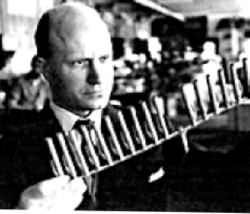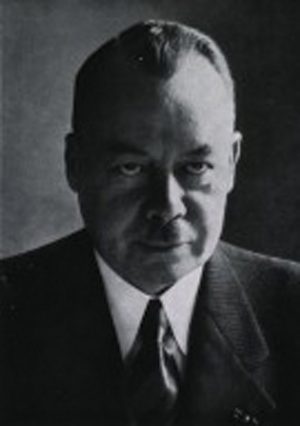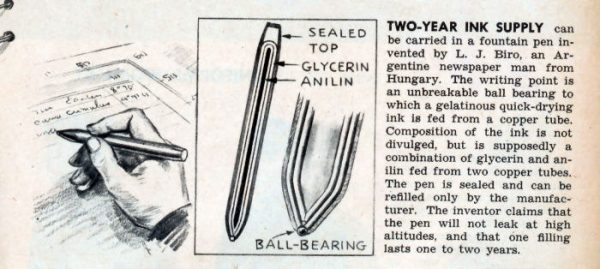Eponym (noun): A person after whom a discovery, invention, place, etc., is named or thought to be named; a name or noun formed after a person. An eponym, almost by definition, has some kind of story behind it — some reason it came to be named after a specific person. In this double-feature episode, Helen Zaltzman of The Allusionist speaks with Roman Mars about his fixation with eponyms.

Take “silhouette,” for instance. Étienne de Silhouette was a politician and the French finance minister presiding over a period of austerity in the mid-1700s. At the time, elaborate portraiture was in fashion, but outline drawings were also becoming popular in part because they were fast, easy and cheap. So a portrait made “a la Silhouette” (showing just a person’s outline in black against a field of white) was a bit of a slight — it described profiles that were inexpensive to create.
Or consider “bowdlerization,” named after the English editor Thomas Bowdler. In 1818, he released series of reworked Shakespearean plays designed to be more suitable for women and children. Stripped of naughty scenes and foul language, phrases like “out, out damned spot” became “out, crimson spot.” His eponym now applies to anything edited for vulgar or objectionable content in a similar fashion, and generally has negative connotations (see also: censorship).
The Ballad of Bic and Biro
A lot of designed objects in our everyday environment are eponyms, too, like the “bic” and the “biro” (British words for a ballpoint pen). László Bíró didn’t actually invent the ballpoint (patented in 1888 by John J. Loud), but he was instrumental in perfecting it.

Born in Budapest in 1899, László Bíró had been a medical student, a stage hypnotist, an insurance salesman, and a race car driver before eventually became a journalist. In the 1930s, he created the pen that would become an everyday item as well as a household name.
Working in the print room, Bíró’s traditional fountain pens would melt and leak due to heat. As the story goes: he saw the way cylindrical printing presses rolled the ink onto the page, and figured there should be a way to miniaturize the process — except a pen roller would have to roll in all directions, not just forward and back. Supposedly, he was puzzling over the problem when he witnessed a group of kids playing with marbles in the street. One marble rolled through a puddle and drew out a line of water in its wake, which gave him the idea to use a ball in the point of the pen.
Bíró’s prototype pens had some issues initially. The ink had to be viscous enough not to leak but not so thick as to clog or jam. So Bíró teamed up with Henry Martin, who worked in the aeronautics industry. To make the pens, you need very fine ball bearings, and the aviation industry makes the best ball bearings. Together during WWII they started manufacturing these ballpoint pens and demonstrating them to potential investors. They also gave some pens to the Royal Air Force (for use in flight to jot down coordinates and such at high altitudes).

Soon, however, another player entered the fray — Marcel Bich, the creator of what would become known as the bic pen. His company licensed the technology from Bíró, but the two companies ended up at odds, variously suing each other over claimed infringements. Still, the Bic Crystal began to take off and still today accounts for a huge percentage of ballpoint pens on the market — there’s even one in the permanent collection at the Museum of Modern Art in New York.

Of course, few people stop to think about the people behind these eponyms — if an eponymous product is successful, the creator’s involvement (and even identity) can end up subsumed by the invention. Bics and biros are well known but more famous than their makers.
Name That Disease
There is an ongoing debate in the medical community surrounding eponyms and their usage in reference to medical conditions. Some industry professionals appreciate the connection to history they evoke while others want to see more scientific precision in medical language. But, as with patients, each individual case is also a bit different.

A disease named after a person can be tricky to memorize while also lacking descriptive power — a surname generally says nothing about the condition it denotes. A classic example is Creutzfeldt-Jakob disease. The name means little to anyone who does not happen to be familiar with the work of German neurologists Hans Gerhard Creutzfeldt and Alfons Maria Jakob. The eponym is also not easy to spell.
In this case, the other option is to go with a scientific term: spongiform encephalitis, the latter word tied to Latin and Ancient Greek words and suffixes for things like brains and inflammation. While still a mouthful, this alternative gives a bit more information at the outset.

From the perspective of a patient, both the eponym and the scientific name can be hard to understand, though sometimes the former is more familiar (and thus more comprehensible) than the latter. Trisomy 21 is a genetic disorder more commonly known by its eponym: Down’s Syndrome. The well-known Heimlich Maneuver is a method for clearing upper airway obstructions for choking victims. Moving away from these eponyms would force the public to relearn something already known.
Aside from descriptive deficits and memorization difficulties, though, there are other arguments against medical eponyms. Discovering and categorizing diseases, for instance, is often a long-term pursuit by numerous parties, not a single person — correspondingly, naming something after one person can oversimplify history. And naming a condition after all parties involved can wind up creating even more complex names, like Mayer-Rokitansky-Küster-Hauser syndrome.
In this case, even the long eponym fails to tell the full story. Indeed, there is documentation about the syndrome dating as far back as the Greek physician Hippocrates in the 5th century BCE. Mayer, Rokitansky, Küster and Hauser all made significant contributions to modern understandings of the condition, but their work spanned generations: Mayer described the syndrome in a paper in 1829, decades before Küster was born and nearly a century before Hauser, who was the one to name the disease Mayer-Rokitansky-Küster Syndrome (someone else added Hauser to the end).

And then there are conditions named after people who no one wants to honor, like Reiter’s Syndrome, referring to joint pain tied to a form of systemic inflammation. It is named after Hans Reiter, a famous Nazi war criminal who did terrible experiments on inmates at Buchenwald. Reiter discovered the eponymous syndrome in 1916 while treating a soldier during the First World War (prior to his Nazi affiliations). American rheumatologist Ephraim Engleman coined the eponym in the early 1940s but later joined the campaign to replace it in light of Reiter’s war crimes. People trying not to evoke Reiter call the condition “reactive arthritis.” While the usage of the eponymous term has decreased, it is still being used in medical schools and in journals and its usage continues to be debated.
Still, as seen in the case of bics and biros, eponyms can be a window into fascinating individuals and objects, and not just the darkest chapters of history. Whether or not using eponyms continues to be common practice in medical communities remains to be seen, but there are good cases to be made on both sides of the ongoing debate.




Comments (17)
Share
This show, at the end, mentions that the Ceasar salad was named after the same Ceasar as the ceasarian section- not true!! I know, I lost a bet on it.
It was actually named after a chef Cesar Cardini who threw the salad together with some of the only ingredients he had available after his kitchen ingredients were depleted in Tijuana, Mexico in the 1920s. Cesar, was an Italian immigrant living in San Diego but working in Tijuana to avoid prohibition laws — so you are likely pronouncing it correctly and it indeed is not pronounced with the Spanish flair of Cesar.
Oh, good! I am happy that I am not the only one who caught this!
The iTunes podcast file for The Eponymist episode seems to be faulty (will not play npormally due to stutter start and gaps throughout. Please update the file. Thanks.
Not seeing any issues on our end after testing play/download. Might need to delete and re-download?
Listening to the eponymist show, I thought it would be great to know what came first: plants named after a botanist? Disease named after a physician? Or a thing named after its inventor?
By the way, do you know that in Mexico the poinsettia is called “nochebuena” because it is a Christmas flower? Poinset was an ambassador to Mexico, where he encountered and baptized the plant–or at least this is what is said here, in Mexico, where I live.
Bíro may be remembered, but I think he’s also mispronounced by English speakers . It’s a relatively common name in Hungary, meaning ‘judge’ but my memory of it is that it’s pronounced ‘beer-o’. (It’s also the word for referee, so if you watch football in Hungary you hear it a lot).
Yeah, I find it weird how Helen talks so much about language but doesn’t care about proper pronunciation of foreign words.
I really like these sorts of short stories about everyday terms as occasional asides. Very much in the vein of eponyms, I’ve wondered if it were feasible to do something similar for terminology in various fields that are inside jokes among their practitioners.
For example, in computer science there are three similar programming languages named C, C++, and C#. The names of these languages are themselves an in-joke for programming, as the ‘++’ in the second language is a specific tool in programming and the octothorpe in the third language is a pair of ‘++’ stacked on top of each other. I don’t know if there’s enough meat on these bones to turn into a full episode, but I’d enjoy learning about more from fields I’m not familiar with.
Loved this episode! I am extremely clumsy so my friends started using my last name when they fell down in spectacular fashion. Instead of “you ate it” they would say “you packed it.” So in my small circle of friends, I had my own eponym :)
A dear friend was infamous for giving compliments that were unintentionally insulting. A classic example being when he tried to compliment a brainy but homely female: “I wish that beautiful women were as smart as you are!” So now whenever someone gives a compliment that unintentionally offends, we call it a “Sullivan compliment” in his honor.
I just remembered another eponym that has become popular in my workplace. When we have a tech problem that can be solved simply by banging on a sweet spot, we call that a “Fonz Solution” — named after Arthur Fonzerelli in the TV show Happy Days. In that show, Fonz was always making the jukebox play his favorite song just by pounding it in the right spot.
I doubt that either of these will ever gain the same ubiquity as “Bic” and “Biro”, but it’s fun to think about how many eponyms we use just among a small group of friends or family or coworkers.
In India, ‘reynold’s’ popularised ball point pens and ‘xerox’ which popularised photocopiers. The names of the companies are now used to refer to the products they popularised.
The term “Heimlich maneuver” is no longer used by the Red Cross etc (it’s “abdominal thrusts” now) and it turns out that Heimlich probably just confused everyone needlessly. Old-fashioned back slaps are at least as effective and are the recommended first option these days…
http://www.redcross.org/flash/brr/English-html/conscious-choking.asp
For anyone interested, after hearing this I was curious about the c-section etymology and found this really interesting mental floss article. Figured we are all nerds here, so some you might enjoy it too………
http://mentalfloss.com/article/50179/how-did-caesarean-sections-get-their-name
At the end of the story, Roman opines that “the etymology with the tidiest story is the least true”. Occam’s Razor suggests otherwise. Great show! J
Hi Roman and the 99pi family, thanks for another enjoyable episode.
I ran across a freely downloadable reference to eponyms – 478 pages! On the off chance you haven’t seen it before, it’s on the MikeWare site: http://www.mikeware.co.uk/mikeware/downloads.html. It’s the one titled “What’s Who?”
(I have no affiliation with the site or the author, just ran across it while researching alternative photo processes).
Keep up the fascinating work!
I don’t know if anyone reads the comments on five-year-old posts, but during the pen portion Helen and her stationery* expert discuss that it is inaccurate when one refers to a “Bic Biro” as they are products from two competitors. This struck me as odd since I vividly remembered owning and using Bic Biros. I believe this is a difference depending on which side of the Atlantic one is purchasing pens. I googled and indeed, a vintage box of Bic Biros popped up on Etsy.
*This may be another linguistic division, at least in terms of common usage if not dictionary definitions. I believe that in the US stationary is generally used only to mean the surface upon which one writes, and does not encompass the writing implements.